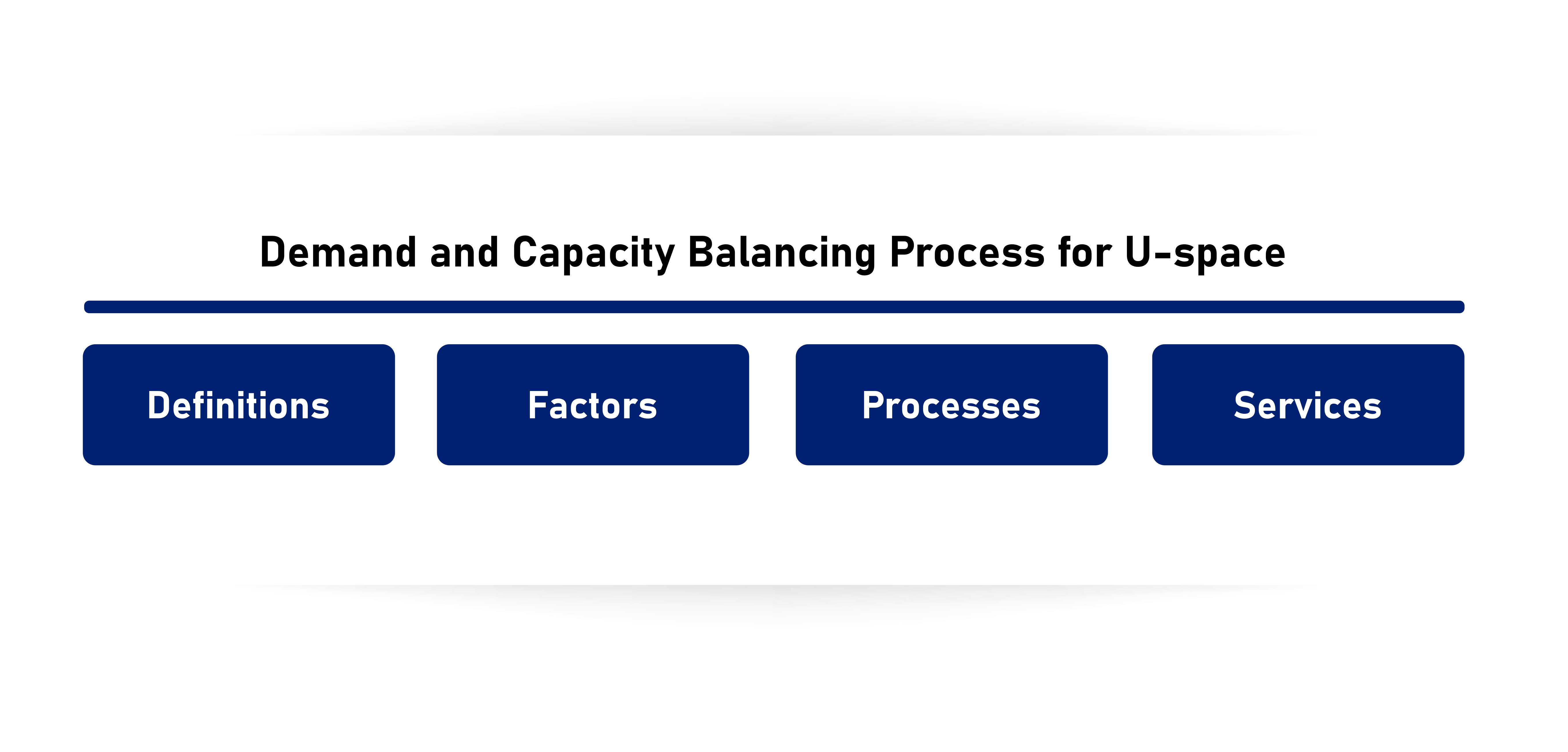Develop a drone DCB process, from strategic to tactical phase, integrating uncertainty of planned operations and guided by the definition of a U-space performance scheme that include the development of metrics for airspace capacity appropriate for an environment with no human controller.
Develop innovative services algorithms and enabling models and technologies as functional blocks of DCB process, able to support large number of simultaneous operations and to design and manage efficient and safe drone trajectories.
The U-space services addressed are: Dynamic Capacity Management, Mission Planning Management, Flight Planning Management, Micro-weather, Strategic De-confliction and Tactical De-confliction. This success criterion also includes the development of enabling models and technologies in support of the services, such as risk model for capacity estimation.
Define a structure for Very Low Level (VLL) airspace and a set of airspace rules that optimises the trade-off between capacity and safety, including the definition of areas where the separation will be procedural and areas where tactical separation will need to be applied, and take into account factors such as noise impact amongst other KPIs.
- Definition of a complete set of rules of the air, airspace structure (addressing separation areas and role of separator) and boundary conditions (including public acceptance, business and regulatory aspects) for urban environment that allows unambiguous operations and requirements for the development of associated U-space services.
Definition of DACUS Performance Framework tailored to drone operations, that includes indicators in the areas of capacity, safety and environment.
Find the optimal balance between on-board separation intelligence and U-space separation service intelligence in tactical separation depending on the type of airspace (with or without conflict resolution in strategic and/or tactical phases), type of separation (drone-drone or drone-manned aviation), CNS performances and separation process of applicability.
Refine Communication, Navigation and Surveillance (CNS) requirements in support of tactical and procedural separation, with a focus on urban environment.
- Produce a refined set of CNS requirements introducing changes with regards to current drone CNS references[1]. These changes must be substantiated by simulation results that produce evidences of the CNS performance needs to ensure safety while maximizing capacity, taking into account the defined rules of the air and separation procedure, the dynamic separation minima and the performance tolerances.
[1] TERRA U-space exploratory research Project, EC and SJU funded under Grant Agreement number 763831, “Technological European Research for RPAS in ATM”, October 2017 to February 2020.
The overarching objective in DACUS is the development of a Demand and Capacity Balancing process for U-space. Nevertheless, the success of this goal cannot be obtained without the commitment of the other stated objectives. The envisioned highly automated and harmonized traffic management requires an extensive research on influence factors (such as CNS performances availability), definitions (such as airspace structure), processes (such as separation management), and services (such as Strategic and Tactical Conflict Resolution).
